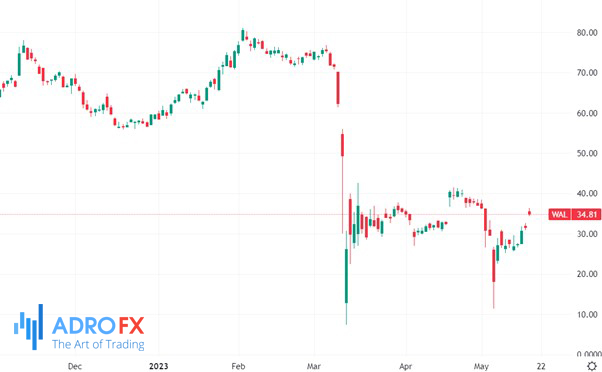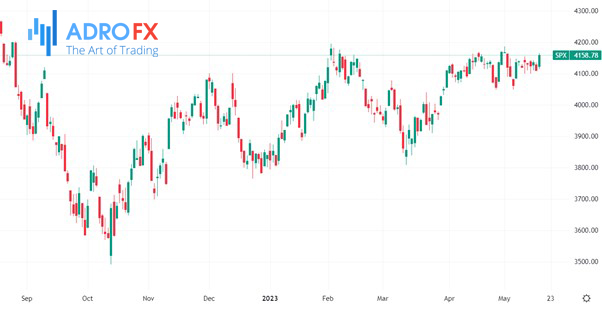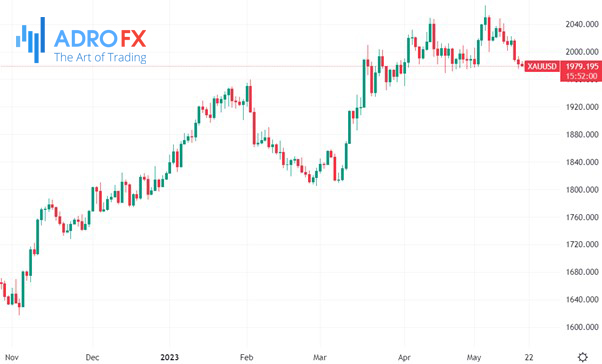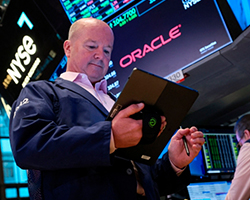US Stocks Soar on Optimism, Gold Prices Struggle | Daily Market Analysis

Key events:
- Australia - Employment Change (Apr)
- New Zealand - Annual Budget Release
- Eurozone - ECB President Lagarde Speaks
- UK - BoE MPC Treasury Committee Hearings
- USA - Initial Jobless Claims
- USA - Philadelphia Fed Manufacturing Index (May)
- USA - Existing Home Sales (Apr)
On Wednesday, US stocks experienced a substantial increase in value, driven by the optimism surrounding a possible agreement on the $31.4 trillion federal debt ceiling. The rebound of regional bank shares also assuaged concerns about the sector's problems escalating.
Failure to reach an agreement by June 1 could result in the US Treasury running out of funds to cover the government's bills, potentially sparking a recession.
The sentiment received a boost from a surge in regional bank shares, led by a 10.19% rise in Western Alliance Bancorp's deposits, which grew by more than $2 billion in the quarter ended May 12.

The KBW regional bank rose 7.28%, recording its largest one-day percentage gain since January 6, 2021, closing at its highest level since May 1. The S&P 500 banks index also soared 4.46%, marking its most significant daily percentage gain since November 10.
These gains represent the most significant one-day percentage increase for all three major indexes since May 5.

Supporting the market were the shares of Tesla, which rose by 4.41% following its annual shareholder meeting held on Tuesday. CEO Elon Musk addressed market speculations about his potential resignation, provided updates on two upcoming mass-market models, and confirmed that deliveries of the long-awaited Cybertruck pickup would commence this year.
With this rally, the S&P 500 is once again nearing the upper end of its recent trading range, around 4,160, which has acted as a resistance level. Analysts noted that significant catalysts such as a debt ceiling agreement or clarity regarding the Federal Reserve's path for interest rate hikes would be necessary to drive stocks significantly higher.

The release of Housing Starts data provides additional evidence that the US consumer, and to some extent the economy as a whole, may already be on a more positive trajectory than initially anticipated this year. This development helps alleviate concerns about an impending recession, as the influential US consumer continues to exhibit resilience and strength.
Interestingly, the improved housing activity coincides with a reported earnings miss from a major hardware store chain. However, even this miss from Home Depot carries a positive aspect for the consumer. A significant portion of the disappointment can be attributed to declining lumber prices. In other words, when contractors visit Home Depot, they encounter deflationary trends in the lumber section. This is an encouraging development that addresses one of the factors that had been negatively impacting consumer confidence for a considerable period of time.

The US dollar is displaying signs of a revival, recording its most successful week since September of the previous year and reaching a five-week peak against the euro. From a technical perspective, the dollar index, which measures the US currency against a basket of six major currencies, still faces a few obstacles before it can confidently declare the end of its bearish phase. However, from a fundamental standpoint, the Federal Reserve is nearing a point where it may pause its cycle of interest rate hikes.
The decline of the US dollar earlier this year was largely driven by expectations of a monetary policy divergence between the US and Europe, with the European Central Bank and the Bank of England anticipated to raise rates. In contrast, the May rate hike by the Fed marked the end of its tightening cycle.
Yet, investors may have become overly optimistic about the improving inflation outlook. Despite the notable decrease in America's headline Consumer Price Index (CPI), underlying inflation remains relatively high. The decline in both the CPI and the core Personal Consumption Expenditures (PCE) measures appears to have stalled, and this has not escaped the attention of the Federal Reserve. Additionally, the job market continues to display resilience, which challenges the Fed.
Considering that the Fed has already pursued a more aggressive monetary policy compared to other central banks, it is likely that any potential upside for the dollar would be limited unless a credit squeeze fails to materialize.

Gold prices showed little movement in Asian trading on Thursday, struggling after experiencing significant losses earlier in the week. Market participants eagerly awaited further signals concerning the state of the US economy and monetary policy.
The precious metal dropped below the $2,000 per ounce threshold for the first time in two weeks due to hawkish indications from the Federal Reserve and reduced concerns regarding a US debt default. These factors prompted traders to shift away from safe-haven assets.
The focus now centers on upcoming speeches by Federal Reserve officials over the next two days, with particular attention on Chair Jerome Powell's address on Friday. Several officials have already indicated that US inflation levels remain elevated, which could result in further tightening measures by the central bank. This suggests additional pressure on gold prices.









